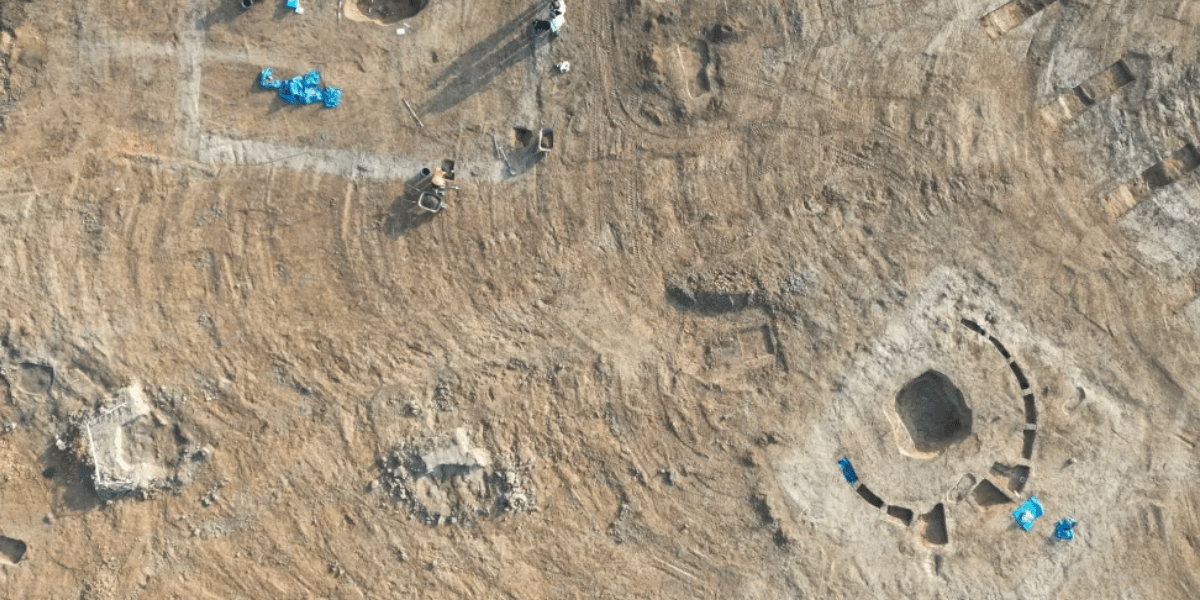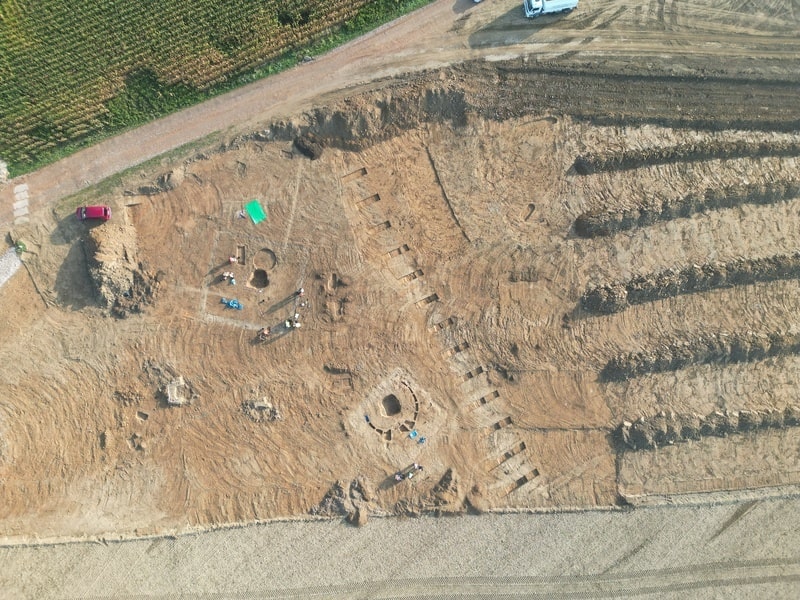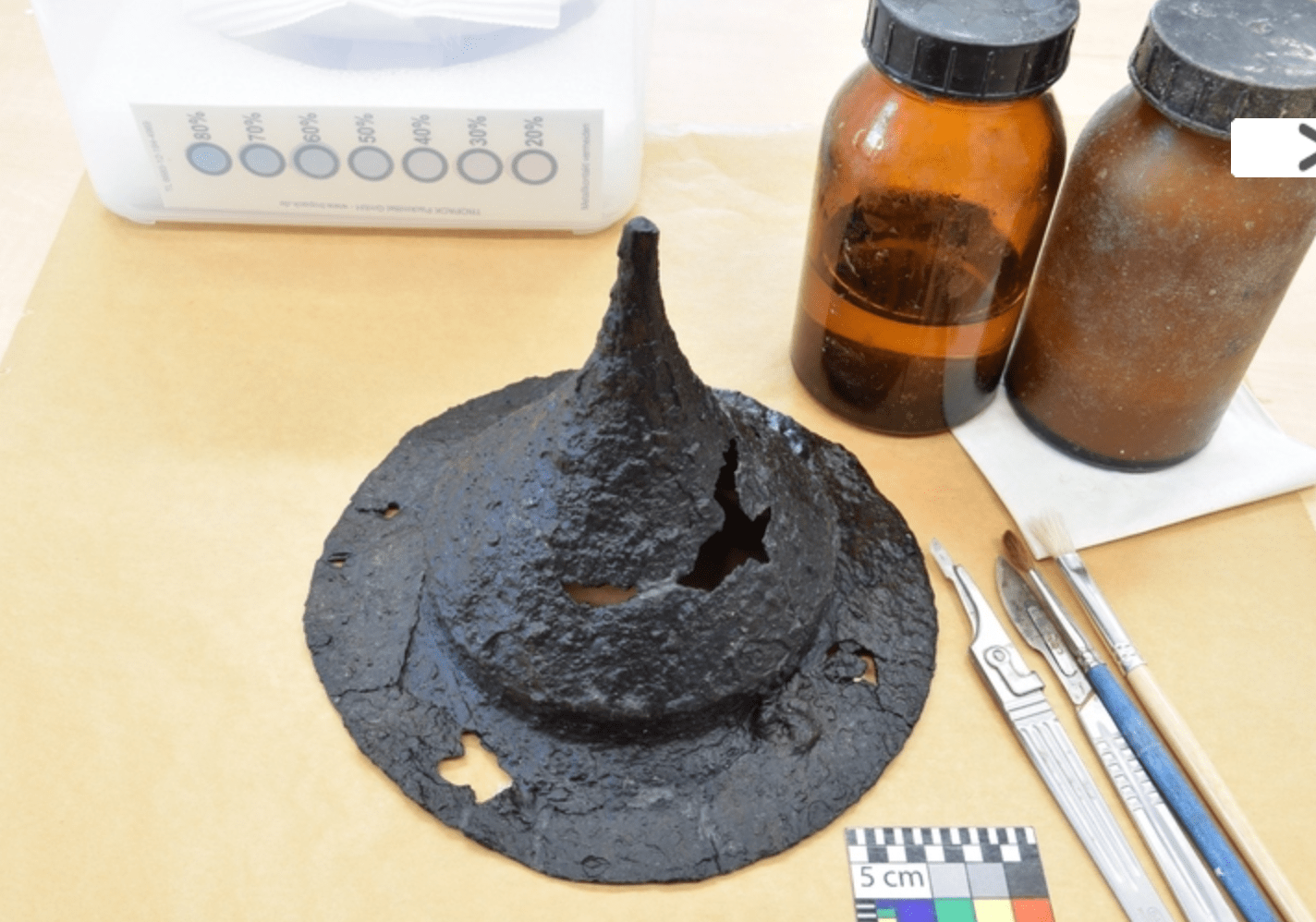
The largest Bronze Age burial site of the Nitra culture in the Czech Republic has been uncovered
Archaeologists have discovered the largest Bronze Age burial site of the Nitra culture near Olomouc in Central Moravia during their rescue research for the future D35 motorway route between Krelov and Neredin.
Representatives from the Olomouc Archaeological Centre informed the Czech News Agency (CTK) that the most significant finding of the research was the large burial site associated with the Nitra culture, which inhabited eastern Moravia and southwestern Slovakia during the Middle Bronze Age (2100-1800 BC). The archaeologists uncovered 130 graves, making this site the largest known from this culture.
The Old Bronze Age in Moravia is represented by two cultural groups: the Únětice culture and the Nitra group.
The Nitra Culture is one of the oldest Bronze Age cultures in Moravia, characterized by the gradual introduction of bronze production, an alloy of copper and tin, which resulted in a metal with improved strength and hardness.
📣 Our WhatsApp channel is now LIVE! Stay up-to-date with the latest news and updates, just click here to follow us on WhatsApp and never miss a thing!!

The graves contained skeletal remains and burial gifts, including copper ornaments, bone beads, stone arrows, copper rings, and bone awls, noted archaeologist Vendula Vranova, the head of the research team, highlighting the significance of these findings.
Men and women were interred in distinct positions and accompanied by various items. For instance, men were provided with boar tusks and hunting implements, whereas women had jewelry and beads made from antlers placed in their graves, she noted.
Moreover, archaeologists uncovered a burial site associated with the Corded Ware culture (2600 BC), which included 17 skeletal graves. Among these, four appeared to belong to men who were buried with axes, flint tools, and ceramic containers. Additionally, the graves were encircled by circular grooves, likely remnants of wooden structures that separated the burial area from the sacred space surrounding it.
Experts found the graves of both the Nitra and Corded Ware cultures particularly fascinating, as they had not disturbed one another despite the abundance of findings.
The archaeologists working at the site in Krelov identified four distinct burial phases. “This area was utilized for burial activities for over 3,000 years, spanning from the end of the Late Stone Age until the 9th century, when the Slavic population inhabited the region within the Great Moravia state,” stated Nikola Orlitova, spokesperson for the center.

The grave of a Germanic warrior with a shield and an iron spear from the 3rd century, the first such discovery in Central Moravia, is another important find. Researchers also uncovered seven cremation graves at the burial site, where they found typical metal jewelry associated with the Celts.
From August 2023 to April 2024, an archaeological rescue excavation was conducted along the D35 route in the area between Krelov and Slavonin. The skeletal remains and artifacts that were discovered will now be examined. As a result, experts will have more information about residents’ physical characteristics, health, nutrition, and genetic relationships.
Source: arkeonews
Cover Image Credit: c
You may also like
- A 1700-year-old statue of Pan unearthed during the excavations at Polyeuktos in İstanbul
- The granary was found in the ancient city of Sebaste, founded by the first Roman emperor Augustus
- Donalar Kale Kapı Rock Tomb or Donalar Rock Tomb
- Theater emerges as works continue in ancient city of Perinthos
- Urartian King Argishti’s bronze shield revealed the name of an unknown country
- The religious center of Lycia, the ancient city of Letoon
- Who were the Luwians?
- A new study brings a fresh perspective on the Anatolian origin of the Indo-European languages
- Perhaps the oldest thermal treatment center in the world, which has been in continuous use for 2000 years -Basilica Therma Roman Bath or King’s Daughter-
- The largest synagogue of the ancient world, located in the ancient city of Sardis, is being restored











Leave a Reply